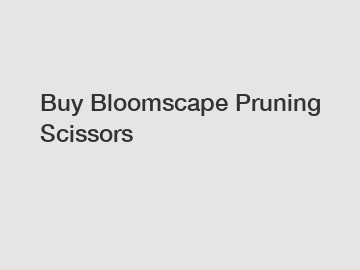Mastering the Art: Level 4 Finish vs Level 5
May. 20, 2024
When it comes to finishing drywall, there are various levels of expertise and precision that can be achieved. Levels 4 and 5 finishes are the highest levels of quality when it comes to finishing drywall, and each level requires a different level of skill and attention to detail.
Level 4 finish is considered to be the standard level of drywall finishing. It involves taping and finishing the joints and covering the screw heads with joint compound. The finish is then sanded smooth to create a consistent surface texture. Level 4 finish is typically used in areas that will be covered with heavy textures or wall coverings, such as wallpaper or heavy paint finishes.
Level 5 finish, on the other hand, is the highest level of drywall finishing available. It involves an extra step of applying a skim coat of joint compound over the entire surface of the drywall. This creates a perfectly smooth and seamless finish that is ready for paint or other finishes without any further preparation. Level 5 finish is typically used in high-end projects where a flawless finish is desired, such as in luxury homes or high-end commercial buildings.
So, what are the differences between Level 4 and Level 5 finishes, and which one is right for your project? Let's explore the key factors that differentiate these two levels of drywall finishing.
Expertise and Skill.
Achieving a Level 4 finish requires a good level of skill and experience with drywall finishing techniques. It involves taping, mudding, and sanding the joints and seams to create a smooth and even surface. While it does require some skill, Level 4 finish is considered to be within the reach of most DIYers or beginner drywall finishers.
On the other hand, achieving a Level 5 finish requires a higher level of expertise and precision. Applying a skim coat of joint compound over the entire surface of the drywall requires great attention to detail and a steady hand. Level 5 finish is typically best left to professional drywall finishers who have experience working with high-end finishes and demanding clients.
Appearance and Aesthetics.
The biggest difference between Level 4 and Level 5 finishes is in the appearance and aesthetics of the finished surface. Level 4 finish can sometimes show imperfections such as tool marks, texture variations, or slight variations in the smoothness of the finish. While these imperfections can be hidden with heavy textures or wall coverings, they may be noticeable in certain lighting conditions or from certain angles.
Related links:What is the lifespan of a diamond drill bit?
A Step-by-Step Guide on How to Use Ratchet Straps
What is a DTH drill bit?
CNC Tool Holders: What are They and What are the Different Types?
Maximizing the Lifespan of Car Skins: A Definitive Guide
Tips for Using Non-Sparking Tools Safely
Pattern Rollers: Transforming Surfaces with Artistic Imprints
Level 5 finish, on the other hand, creates a perfectly smooth and seamless surface that is free of any imperfections. The finish is so smooth that it is ready for paint or other finishes without any further preparation. Level 5 finish is ideal for projects where a flawless finish is desired and where the aesthetics of the finished surface are of utmost importance.
Durability and Longevity.
Another key factor to consider when choosing between a Level 4 and Level 5 finish is the durability and longevity of the finished surface. Level 4 finish is more prone to damage than Level 5 finish, as it does not provide the same level of protection against dents, dings, or other types of wear and tear.
Level 5 finish, on the other hand, creates a more durable and long-lasting surface that is less prone to damage. The skim coat of joint compound helps to reinforce the drywall and create a strong and resilient finish that can withstand the test of time.
Cost and Budget.
One final factor to consider when choosing between a Level 4 and Level 5 finish is the cost and budget of the project. Level 4 finish is generally more cost-effective than Level 5 finish, as it requires less time, materials, and expertise to achieve. This makes Level 4 finish a popular choice for projects with limited budgets or where cost savings are a priority.
Level 5 finish, on the other hand, is more expensive than Level 4 finish due to the additional time, materials, and expertise required to achieve a flawless finish. While Level 5 finish may come with a higher price tag, the superior quality and aesthetics of the finished surface may be worth the investment for high-end projects where perfection is paramount.
In conclusion, both Level 4 and Level 5 finishes have their own set of advantages and disadvantages. Level 4 finish is a standard level of drywall finishing that is suitable for most projects, while Level 5 finish is a high-end finish that is ideal for projects where perfection is desired. When deciding between a Level 4 and Level 5 finish, consider factors such as expertise and skill, appearance and aesthetics, durability and longevity, and cost and budget to determine which finish is right for your project.
The company is the world’s best level 4 finish vs level 5, putty roller, are electric paint sprayers any good supplier. We are your one-stop shop for all needs. Our staff are highly-specialized and will help you find the product you need.
Related links:How Do I Choose a Weldon End Mill Holder?
How long will a diamond blade last?
Non-Sparking Tools in Oil and Gas: A Safer Choice
Non-Sparking Sockets and Accessories: A Crucial Component for Safety
How to Make Circular Saw Blades Last Longer?
What kind of roller do you use for epoxy flooring?
Why are diamond blades so cheap?
165
0
0
Related Articles
-
103
0
0
-
56
0
0
-
59
0
0


Comments
All Comments (0)